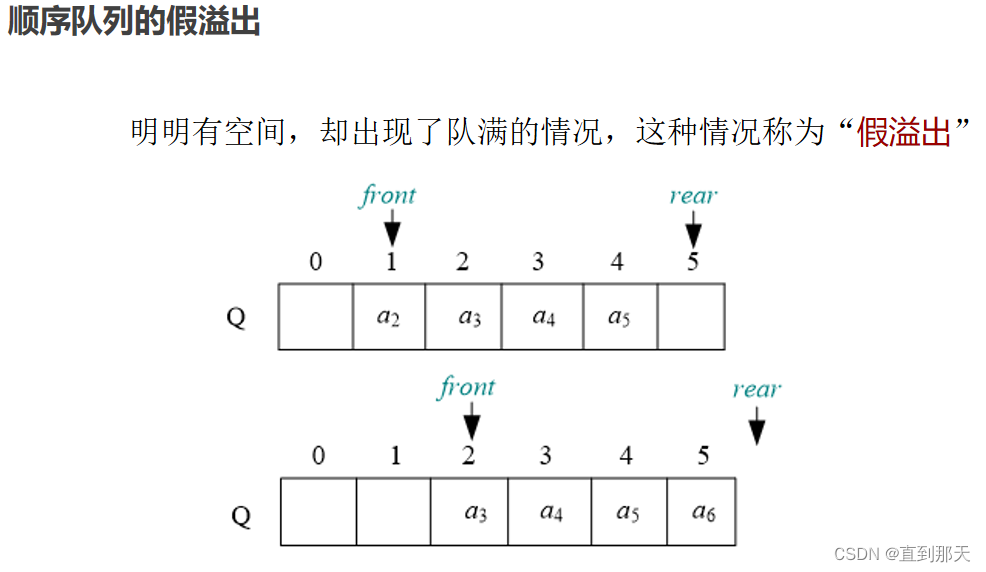数据结构
废话不多说,直接上代码
1.顺序表
#include <stdio.h>
#include <string.h>
#include <stdlib.h>
#define Maxsize 1000
typedef struct Sq{
int *elem;
int length;
}Sqlist;
int init(Sqlist* L){//初始化顺序表
L->elem = (int* )malloc(Maxsize* sizeof (int));
if(L->elem==NULL) return 0;
L->length = 0;
return 1;
}
void Create_list(Sqlist* L){//创建顺序表
int n, x;
scanf("%d", &n);
for(int i = 0; i < n; i++){
scanf("%d", &x);
L->elem[i] = x;
L->length++;
}
}
int Getelem(Sqlist* L, int idx){//获取第idx位置的元素
int t = idx - 1;
if(t<0||t>=Maxsize) return -1;
for(int i = 0; i < Maxsize; i++){
if(i==t) return L->elem[i];
}
}
int Insert(int idx, int x, Sqlist* L){//把x插入位置为idx的位置
if(L->length>=Maxsize) return 0;//顺序表满了
if(idx<1||idx>L->length) return 0;
for(int i = L->length; i >= idx; i--){
L->elem[i] = L->elem[i-1];
}
L->elem[idx-1] = x, L->length++;
return 1;
}
int Delete(int idx, Sqlist* L){//删除指定位置的元素
if(idx<1||idx>L->length) return 0;
for(int i = idx - 1; i < L->length - 1; i++){
L->elem[i] = L->elem[i+1];
}
L->length--;
return 1;
}
void print(Sqlist* L){//打印顺序表
for(int i = 0; i < L->length; i++){
printf("%d ", L->elem[i]);
}
printf("\n");
}
int main(){
Sqlist* L;
L = (Sqlist*) malloc(sizeof(Sqlist));
init(L);
Create_list(L);
print(L);
return 0;
}
2.链表
#include <stdio.h>
#include <string.h>
#include <stdlib.h>
#define len sizeof (Lnode)
using namespace std;
typedef struct Lnode{
int elem;
struct Lnode* next;
}Lnode;
void Create1_list(Lnode* head){//头插法,并且头指针不存数据
Lnode* p = NULL;
int n;
scanf("%d", &n);
for(int i = 0; i < n; i++){
p = (Lnode*) malloc(sizeof (len));
p->next = NULL;
scanf("%d", &p->elem);
p->next = head->next;
head->next = p;
}
}
void Create2_list(Lnode* head){//尾插法,并且头指针不存数据
Lnode* p2 = NULL;
int n;
scanf("%d", &n);
for(int i = 0; i < n; i++){
Lnode* p1 = (Lnode*)malloc(sizeof (len));
p1->next = NULL;
scanf("%d", &p1->elem);
if(!head->next) {
head->next = p1;
p2 = p1;
}
else {
p2->next = p1;
p2 = p1;
}
}
}
int Insert(int idx, int x, Lnode* head){//如果插入位置大于链表长度,则插到表尾
if(idx<1) return 0;
int j = 0;
Lnode* p = head;
while(p->next&&j<idx-1){
p = p->next;
j++;
}
Lnode* q = (Lnode*)malloc(sizeof (len));
q->elem = x, q->next = NULL;
q->next = p->next;
p->next = q;
return 1;
}
void Delete(int idx, Lnode* head){//删除指定位置的节点
int j = 1;
Lnode* p = head;
while(p&&j<idx){
p = p->next;
j++;
}
if(p&&p->next){
p->next = p->next->next;
}
}
void print(Lnode* head){//打印
for(Lnode* t = head->next; t; t = t->next){
printf("%d ", t->elem);
}
}
int main(){
Lnode* head = (Lnode*) malloc(sizeof (len));
head->next = NULL;
Create2_list(head);
Delete(3, head);
print(head);
return 0;
}
3.顺序栈
#include <stdio.h>
#include <string.h>
#include <stdlib.h>
#define Maxsize 100
#define null 0X3f3f3f3f
typedef struct Sqstack{
int *base;
int *top;
}Stack;
void init(Stack *stk){
stk->base = (int*)malloc(Maxsize*sizeof(int));
stk->top = stk->base;
}
void Push(int x, Stack *stk){
*(stk->top++) = x;
}
int Top(Stack *stk){//如果为空,返回null(0X3f3f3f3f)
if(stk->base==stk->base) return null;
return *(stk->base-1);
}
void Pop(Stack *stk){
if(stk->top==stk->base) return ;
stk->top--;
}
void print(Stack *stk){//遍历栈中的元素
while(stk->top!=stk->base){
printf("%d ", *(stk->top-1));
stk->top--;
}
}
int main(){
Stack *stk = (Stack*)malloc(sizeof(Stack));
init(stk);
Push(1, stk);
Push(2, stk);
Push(3, stk);
Pop(stk);
print(stk);
return 0;
}
4.队列

所以这里我们采用一个循环的思想
1.顺序队列
#include <stdio.h>
#include <stdlib.h>
#include <string.h>
#define Maxsize 1000
#define null 0X3f3f3f3f
typedef struct Sqqueue{
int *base;
int front, rear;
}Queue;
void init(Queue *q){
q->base = (int*)malloc(Maxsize*sizeof(int));//由于判断队列是否满了,这里的Maxsize实际上只用了Maxsize-1个位置
q->front = q->rear = 0;
}
void Push_back(int x, Queue *q){//把x插到队尾
if((q->rear+1)%Maxsize==q->front) {
printf("队列满了");
return ;
}
q->base[q->rear] = x;
q->rear = (q->rear+1)%Maxsize;
}
int Get_front(Queue* q){
if(q->front==q->rear) return null;
return q->base[q->front];
}
void Pop_front(Queue* q){
if(q->front==q->rear){
printf("当前队列无元素");
return ;
}
q->front = (q->front+1)%Maxsize;
}
int main(){
Queue *q = (Queue*)malloc(sizeof(Queue));
init(q);
Push_back(1, q);
Push_back(2, q);
printf("%d ", Get_front(q));
Pop_front(q);
printf("%d ", Get_front(q));
return 0;
}
5.树
#include <stdio.h>
#include <stdlib.h>
#include <string.h>
#define Elemtype char
typedef struct Btree{
Elemtype val;
struct Btree *left, *right;
}Btree;
typedef struct Node{
Btree* val;
struct Node* next;
}Node;//typedefine了个寂寞hhh
typedef struct Sqqueue{//这里采用链队列
Node* front;
Node* rear;
}Queue;
void Push_back(Btree* e, Queue* q){//把元素加到队尾
q->rear->val = e;
Node* p = (Node*)malloc(sizeof(Node));
p->next = NULL;
q->rear->next = p;
q->rear = p;
}
Btree* Get_front(Queue* q){//获取队头元素
if(q->front==q->rear) return NULL;
return q->front->val;
}
void Pop_front(Queue* q){//把队头元素移除队列
Node* p = q->front;
q->front = q->front->next;
}
int is_Empty(Queue* q){//判断队列是否为空
if(q->front==q->rear) return 0;
return 1;
}
void Create_tree(Btree* *T){//创建二叉树
char ch;
scanf("%c", &ch);
if(ch=='*') *T = NULL;
else {
*T = (Btree*)malloc(sizeof(Btree));
(*T)->val = ch;
Create_tree(&(*T)->left);
Create_tree(&(*T)->right);
}
}
void preorder(Btree* T){//先序遍历
if(T!=NULL){
printf("%c ", T->val);
preorder(T->left);
preorder(T->right);
}
}
void inorder(Btree* T){//中序遍历
if(T){
preorder(T->left);
printf("%c ", T->val);
preorder(T->right);
}
}
void posorder(Btree* T){//后序遍历
if(T){
preorder(T->left);
preorder(T->right);
printf("%c ", T->val);
}
}
void traverse(Btree* T){
Queue* q = (Queue*)malloc(sizeof(Queue));
q->front = (Node*)malloc(sizeof(Node));
q->front->next = NULL;
q->rear = q->front;
if(T) Push_back(T, q);
while(is_Empty(q)){
Btree* t = Get_front(q);
Pop_front(q);
printf("%c ", t->val);
if(t->left){
Push_back(t->left, q);
}
if(t->right){
Push_back(t->right, q);
}
}
}
int Get_leaf(Btree* T){
if(!T) return 0;
else {
if(!T->left&&!T->right) return 1;
else return Get_leaf(T->left)+Get_leaf(T->right);
}
}
int Get_depth(Btree* T){
if(!T) return 0;
else {
//return max(Get_depth(T->left), Get_depth(T->right)) + 1;
int a = Get_depth(T->left), b = Get_depth(T->right);
if(a>b) return a+1;
else return b+1;
}
}
int main(){
Btree *T = NULL;
Create_tree(&T);
traverse(T);
posorder(T);
printf("当前二叉树的叶子数为:%d\n", Get_leaf(T));
printf("当前二叉树的深度为:%d\n", Get_depth(T));
return 0;
}
这里要传入的是指针的指针,一开始我传入的仅仅是指针,后来发现错了。至于为什么是错的,我认为是在创建的过程中会对这个T指针不断的移动(递归嘛),以至于修改了T指针所指向的空间。所以这里我们需要传入指针的指针。
关于&为什么能表示指针的指针,我举一个例子:
int x = 10;
int *p = &x;
printf("%d %d", p, *p);
打印结果是 6487572 10
第一个代表p地址值,第二个*p代表解引用。这也就很好的反映了指针的本质(就是指向一块空间),所以这里可以用&来完成一个降维操作。
第一次写错误难免有,欢迎指正!






















 18万+
18万+











 被折叠的 条评论
为什么被折叠?
被折叠的 条评论
为什么被折叠?








